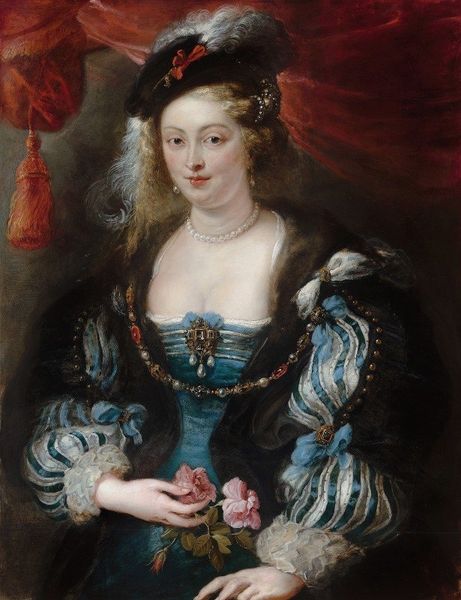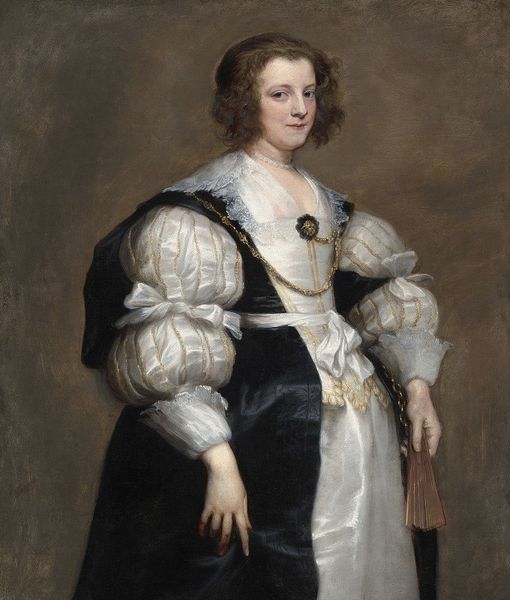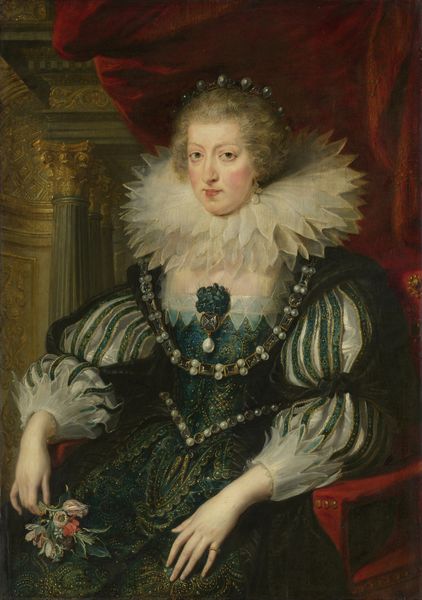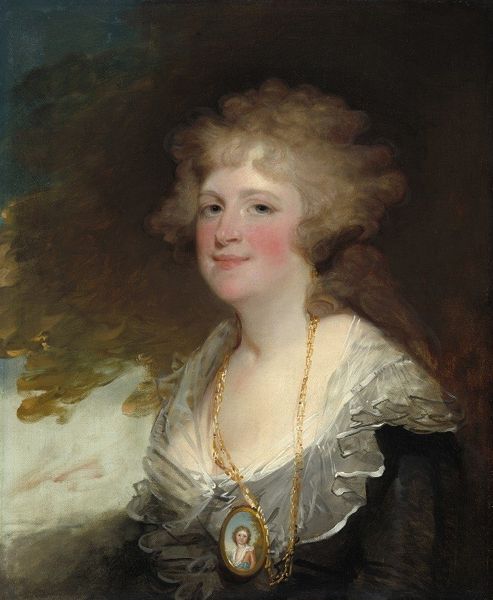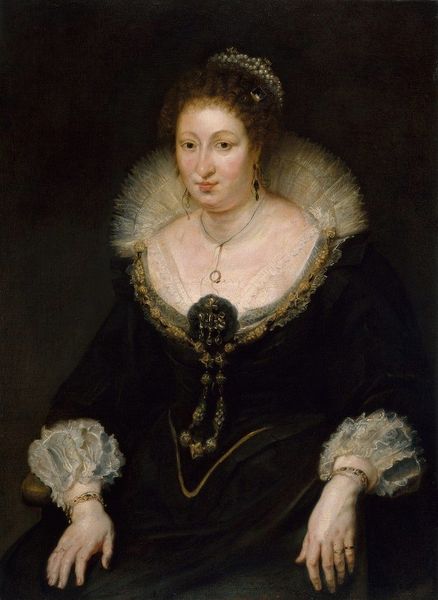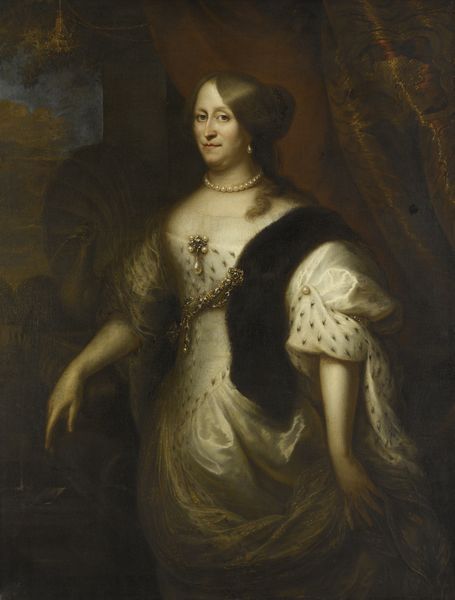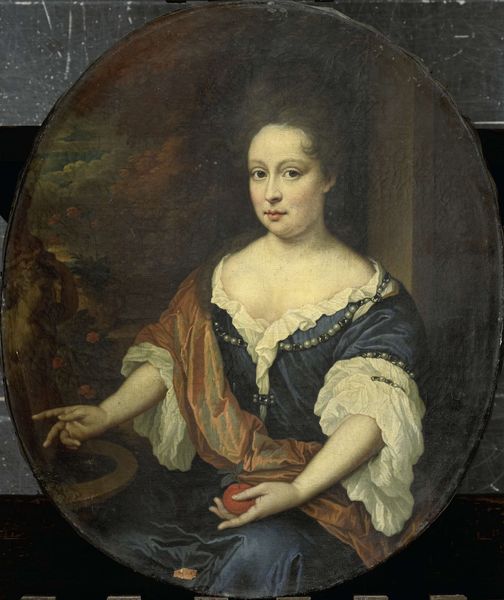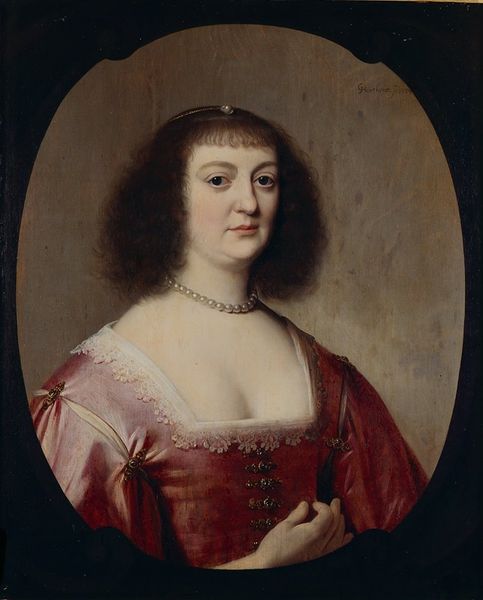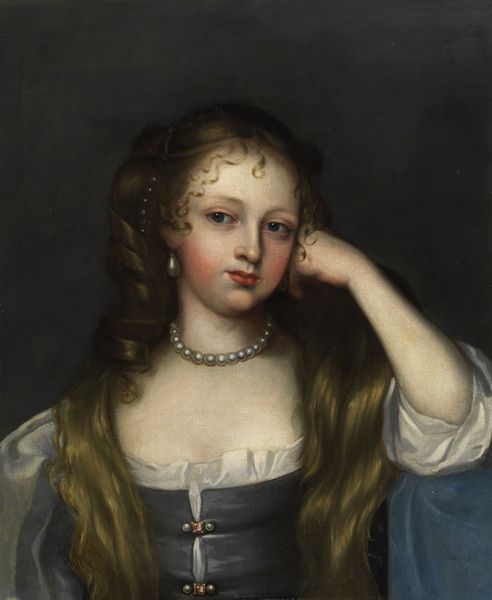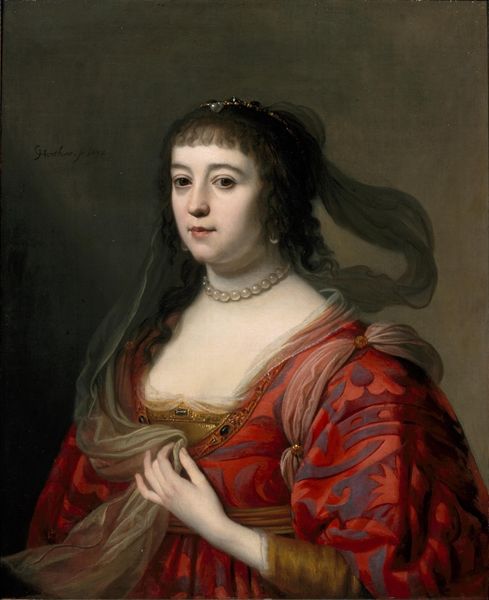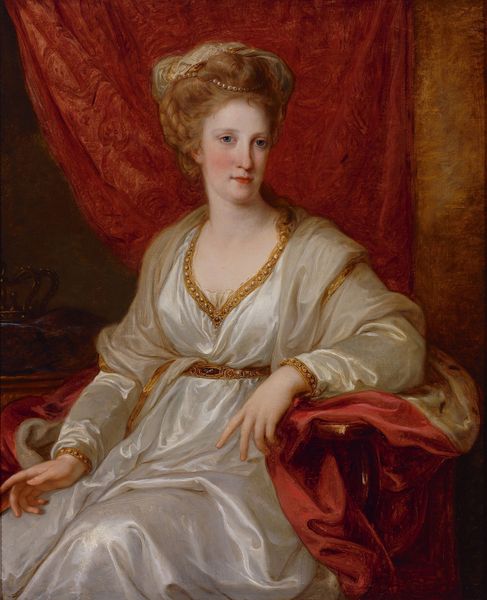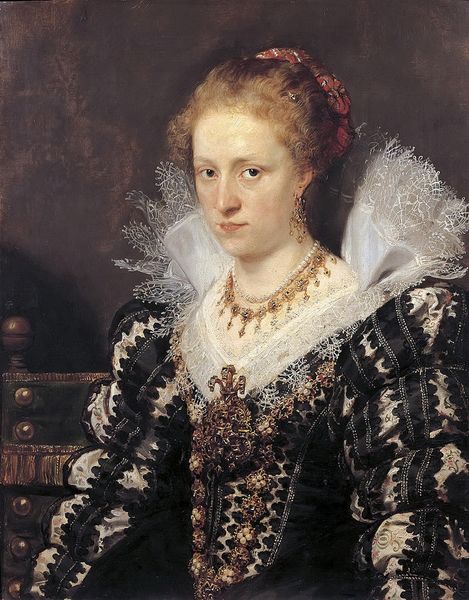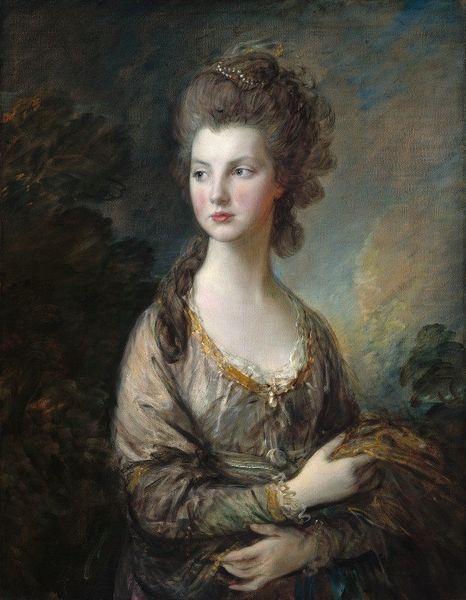
Portrait of Helena Fourment (1614-1673), the Artist’s Second Wife c. 1650
0:00
0:00
peterpaulrubens
Rijksmuseum
painting, oil-paint
#
portrait
#
baroque
#
painting
#
oil-paint
#
figuration
#
history-painting
Dimensions: support height 75 cm, support width 55.6 cm, outer size depth 12 cm
Copyright: Rijks Museum: Open Domain
Curator: Looking at this portrait by Peter Paul Rubens, painted around 1635, one can’t help but feel drawn into the intimate world of the artist. He captures his second wife, Helena Fourment, in such a way that the personal becomes universally evocative. Editor: It strikes me first as a document of luxury. The sheen of the silk, the gold chains draped across her gown... it’s a powerful statement about material wealth and class in 17th century Europe. One immediately starts thinking about trade routes that made these adornments possible. Curator: Indeed, she is lavishly adorned, yet there's a quiet stillness, a certain interiority in her gaze that transcends mere display. Her adornments enhance the story, rather than define it. It's interesting how Rubens uses oil paints to create the illusion of light playing on her skin. Editor: Exactly, how the artist can transform raw materials into symbols of affluence – grinding pigments, weaving fabrics... Someone would have likely mined raw gold, refining techniques. Those chains and jewel are no simple props but products of intensive labor, and that should factor in our consideration here. Curator: The textures, too, fascinate me: the softness of her skin versus the rigidity of the pearl necklace, the subtle glint in her eyes. It evokes such feeling! It invites empathy! I can sense Rubens' genuine affection. And I keep returning to how the warm tones contrast with her fair skin to make her literally radiant. Editor: Radiant indeed. Still, the materials speak volumes about how she's positioned within that society's economy. We mustn’t ignore what sustains her. Rubens captured the moment of material production as a key part of his wife's life story. That adds layers of value here. Curator: I find this has been enlightening: examining the human condition as it mingles with materiality, even today. It’s so poignant how he used everyday materials to explore deep affection and respect. Editor: And for me, considering not just the image but also its material supports – paint, canvas, gold – as material archives. Examining production helps us reflect critically about power and beauty, so even after all this time, these remain works worth questioning.
Comments
No comments
Be the first to comment and join the conversation on the ultimate creative platform.
